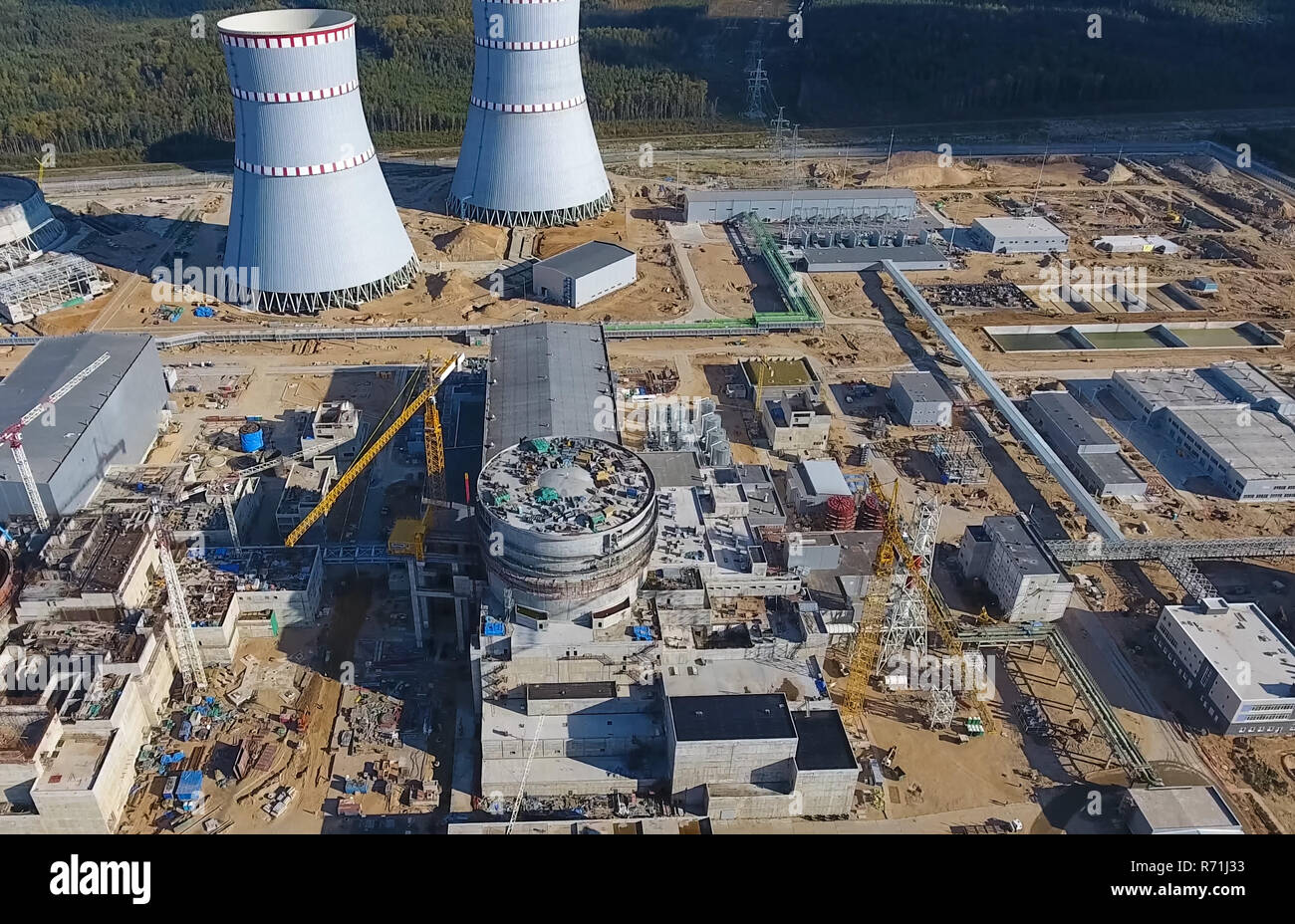Accelerated Nuclear Power Plant Construction: A Trump Administration Priority?

Table of Contents
The Trump Administration's Stated Energy Policy Goals
The Trump administration articulated a clear energy policy centered around several key objectives, each with implications for nuclear power's role.
Emphasis on Energy Independence
A core tenet of the Trump administration's energy policy was achieving greater energy independence and reducing reliance on foreign energy sources. This resonated with the idea that a robust domestic nuclear energy sector could significantly contribute to this goal.
- Withdrawal from the Paris Agreement: This signaled a shift towards prioritizing domestic energy production.
- Increased domestic oil and gas production: While not directly related to nuclear power, this demonstrated a broader focus on domestic energy security.
- Support for advanced nuclear reactor technologies: This suggested a belief in the long-term potential of nuclear power as a secure, reliable energy source.
These actions, while not exclusively focused on nuclear power, created a favorable environment for its potential expansion. Statements from administration officials frequently emphasized the importance of a diverse energy mix, with nuclear power playing a significant role in achieving energy dominance.
Promoting Nuclear Power as a Clean Energy Source
The administration, while acknowledging the environmental impact of nuclear waste, promoted nuclear power as a cleaner alternative to fossil fuels in addressing climate change concerns.
- Funding for advanced reactor research and development: This aimed to overcome limitations associated with traditional nuclear technologies.
- Streamlining the regulatory process (in theory): Although not always successful, efforts were made to reduce permitting timelines for new nuclear projects.
- Emphasis on the carbon-free nature of nuclear energy: Official statements consistently highlighted the absence of greenhouse gas emissions during nuclear power generation.
However, the administration's commitment to clean energy was often overshadowed by its simultaneous promotion of fossil fuels, creating a complex and sometimes contradictory energy policy landscape.
Economic Growth Through Nuclear Power
The potential for economic growth through nuclear power plant construction was another significant argument used to justify its expansion.
- Projected job creation: The construction and operation of nuclear power plants were touted as major job creators, particularly in manufacturing and skilled trades.
- Infrastructure development: Nuclear plant construction was viewed as a driver of infrastructure development, boosting local and regional economies.
- Technological advancements: The development and deployment of advanced nuclear reactors were expected to spur innovation and competitiveness in the energy sector.
Economic impact studies were commissioned and cited to support the claim that investing in nuclear power would stimulate economic growth and create high-paying jobs.
Obstacles to Accelerated Nuclear Power Plant Construction
Despite the stated policy goals, several significant obstacles hampered efforts to accelerate nuclear power plant construction.
Regulatory Hurdles and Permitting Processes
The regulatory process for nuclear power plants is notoriously complex and lengthy, involving numerous agencies and extensive environmental reviews.
- Nuclear Regulatory Commission (NRC) oversight: The NRC's rigorous safety standards and extensive review processes often lead to significant delays.
- State and local permitting requirements: Additional layers of regulatory review at the state and local levels further complicate and prolong the approval process.
- Environmental Impact Statements (EIS): The preparation and review of comprehensive EISs are time-consuming and can trigger protracted legal challenges.
Past projects have experienced delays of several years, or even decades, due to regulatory hurdles.
Financing Challenges
The high capital costs associated with building nuclear power plants pose a significant financial challenge.
- High upfront investment costs: Nuclear plants are extremely expensive to build, requiring billions of dollars in investment.
- Securing financing: Obtaining financing for such large-scale projects is difficult, even with government support.
- Risk assessment by investors: Investors are often hesitant to commit capital due to the inherent risks associated with nuclear power, including potential cost overruns and regulatory uncertainty.
Many proposed nuclear projects struggle to secure sufficient financing, resulting in delays or outright cancellation.
Public Opinion and Safety Concerns
Public perception of nuclear power is often shaped by safety concerns stemming from past accidents like Chernobyl and Fukushima.
- Negative public perception: Polls regularly reveal significant public opposition to new nuclear power plants due to safety concerns.
- NIMBYism (Not In My Backyard): Local communities often resist the construction of nuclear plants due to fear of accidents and the long-term risks associated with nuclear waste.
- Influence of media coverage: Negative media coverage of nuclear accidents or safety issues further fuels public anxieties.
These factors can lead to prolonged delays or the ultimate abandonment of nuclear projects.
Evidence of Accelerated Construction (or Lack Thereof) During the Trump Administration
Examining specific projects reveals the limited impact of the Trump administration's policies on the speed of nuclear power plant construction.
Specific Examples of Nuclear Projects
- Vogtle Electric Generating Plant (Georgia): While construction continued under the Trump administration, this project experienced significant cost overruns and delays, highlighting the challenges inherent in large-scale nuclear projects.
- Summer Nuclear Plant (South Carolina): This project was ultimately cancelled, demonstrating the considerable financial and regulatory obstacles faced by nuclear power plant construction.
- New nuclear projects proposed but not commenced: Numerous proposals for new reactors emerged but failed to move beyond the planning stages.
The mixed results of existing projects and the limited progress of new ones illustrate the substantial obstacles to accelerated construction.
Analysis of Successes and Failures
The Trump administration's policies did not significantly accelerate nuclear power plant construction. While some initiatives aimed to streamline regulations and promote nuclear energy, the inherent challenges related to financing, public perception, and the regulatory process ultimately proved more impactful. The limited number of new nuclear plants initiated and the substantial delays and cost overruns on existing projects demonstrate the difficulty of achieving rapid expansion of nuclear power, even with supportive policies.
Conclusion: Evaluating the Trump Administration's Impact on Accelerated Nuclear Power Plant Construction
In summary, the Trump administration's efforts to promote accelerated nuclear power plant construction, while exhibiting some positive intentions, did not translate into significant advancements in the sector. The high costs, complex regulatory environment, and persistent public safety concerns continue to present major barriers. While the administration's stated energy policy goals included promoting nuclear power, the practical realities of construction proved more challenging to overcome. Further investigation into the complexities of accelerated nuclear power plant construction is crucial for informed policymaking, particularly considering the critical role nuclear power may play in future energy systems. Learn more about the challenges and successes in accelerated nuclear power plant construction by exploring [link to relevant resources].

Featured Posts
-
 Transznemu No Letartoztatasa Floridaban Jogsertes A Noi Mosdo Hasznalataval Kapcsolatban
May 10, 2025
Transznemu No Letartoztatasa Floridaban Jogsertes A Noi Mosdo Hasznalataval Kapcsolatban
May 10, 2025 -
 Live Womb Transplants A Childrens Hospital Community Activists Suggestion For Transgender Mothers
May 10, 2025
Live Womb Transplants A Childrens Hospital Community Activists Suggestion For Transgender Mothers
May 10, 2025 -
 Nhs Trust Boss Cooperates With Nottingham Attack Investigation
May 10, 2025
Nhs Trust Boss Cooperates With Nottingham Attack Investigation
May 10, 2025 -
 Uy Scuti Release Date Tease Young Thugs New Album
May 10, 2025
Uy Scuti Release Date Tease Young Thugs New Album
May 10, 2025 -
 Open Ai And Chat Gpt An Ftc Investigation Begins
May 10, 2025
Open Ai And Chat Gpt An Ftc Investigation Begins
May 10, 2025
